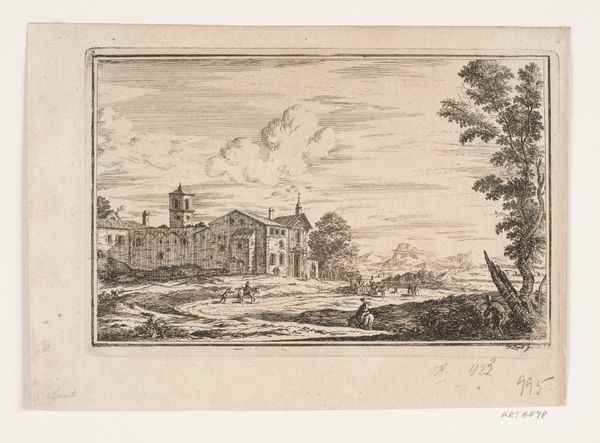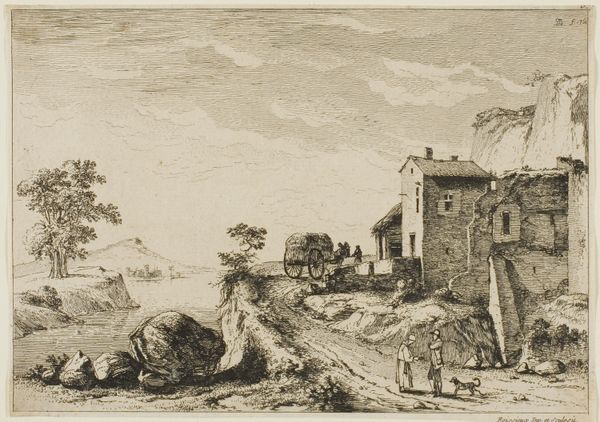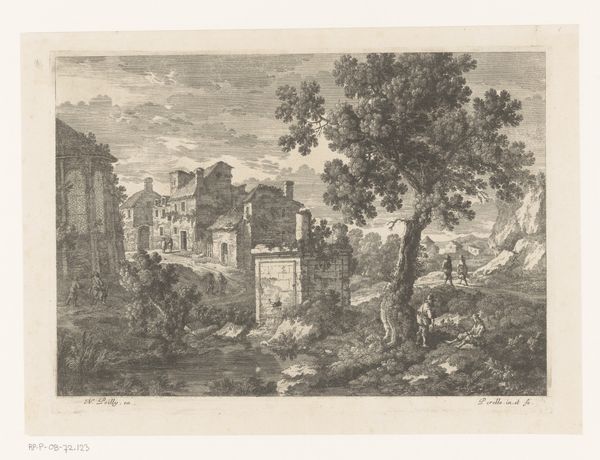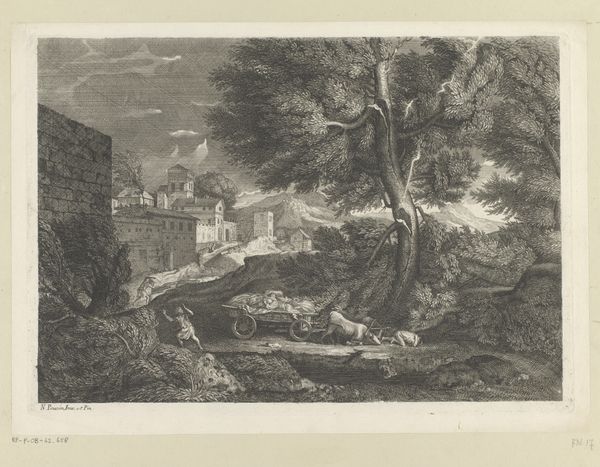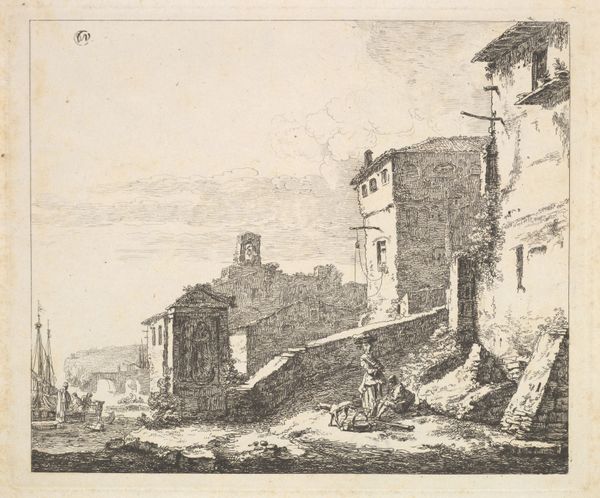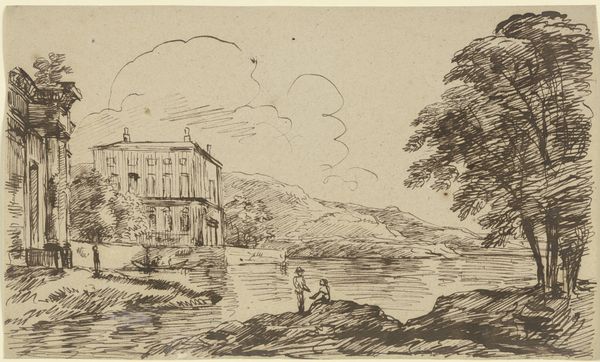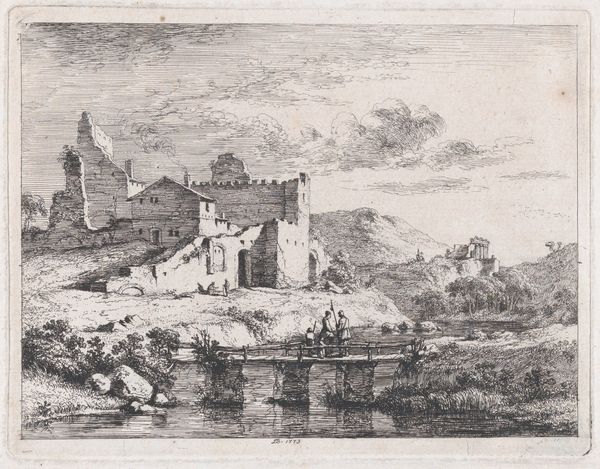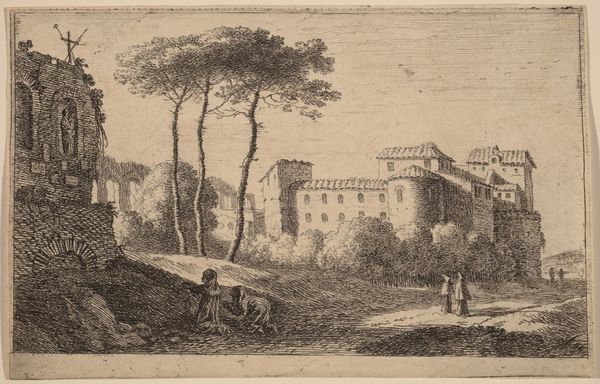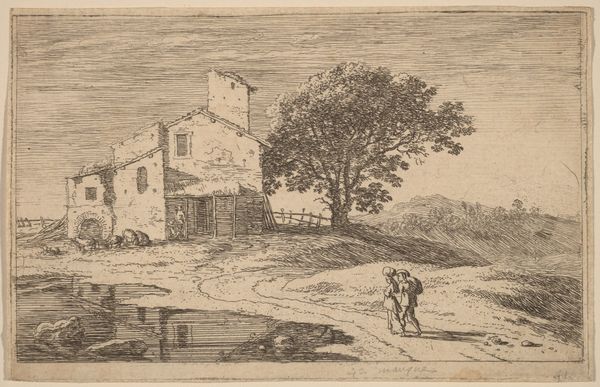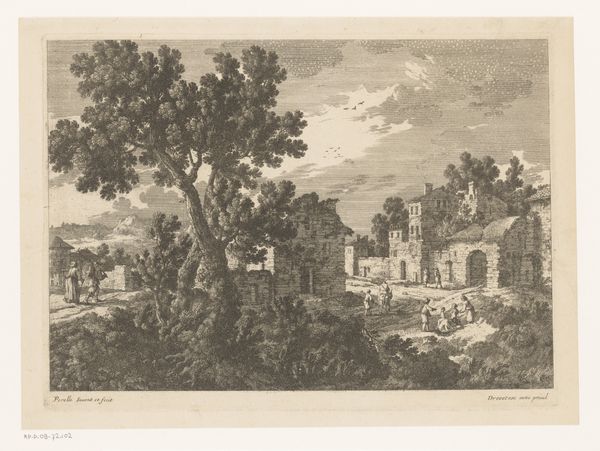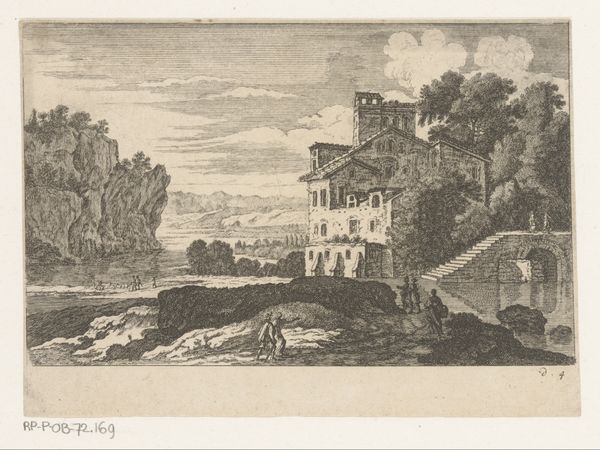
drawing, print, etching, ink
#
pen and ink
#
drawing
# print
#
etching
#
landscape
#
ink
#
cityscape
#
genre-painting
Copyright: National Gallery of Art: CC0 1.0
This print of houses beside a river was made in the 18th century by Jan Smees. It is an etching, meaning that the artist covered a metal plate with a waxy, acid-resistant ground. Smees then drew his composition through this ground, exposing the metal underneath. The plate was then submerged in acid, which bit into the exposed lines, creating grooves. The ground was removed, ink was applied to the plate, filling the etched lines, and the surface was wiped clean. Finally, the plate was pressed onto paper, transferring the ink and creating the print you see here. This method allowed for the reproduction of images, making art more accessible beyond unique paintings or sculptures. The crisp, precise lines of the etching beautifully capture the textures of the buildings, water, and foliage. The process of etching, with its careful steps and controlled application, mirrors the detailed observation evident in the artwork. By understanding the materials and processes behind this print, we can better appreciate the artist's skill and the social context of art production in the 1700s, and the labor and accessibility implied in it.
Comments
No comments
Be the first to comment and join the conversation on the ultimate creative platform.
